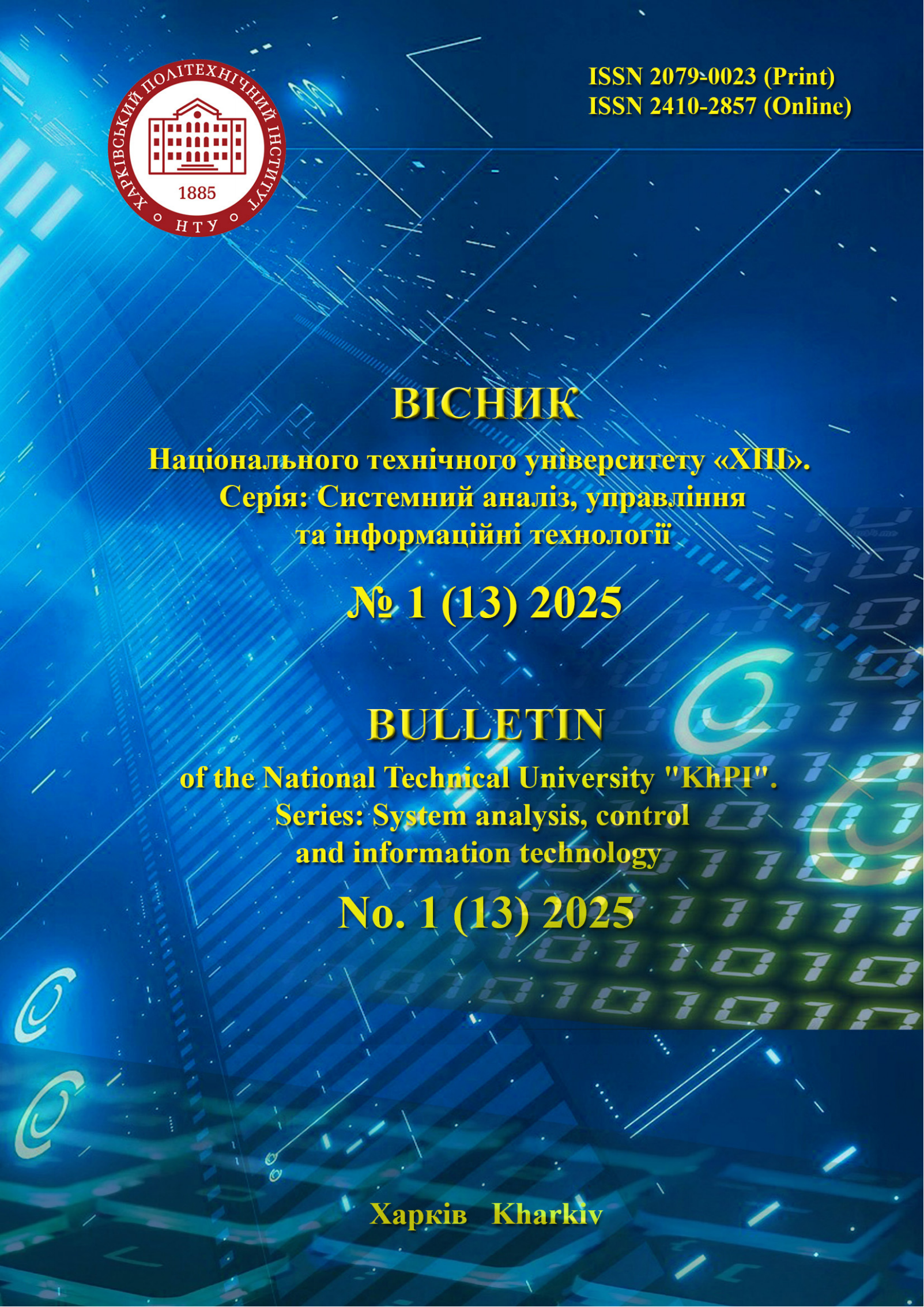EVALUATION OF THE EFFECTIVENESS OF THE “INFRASTRUCTURE AS CODE” METHODOLOGY FOR CREATING AND MANAGING CLOUD INFRASTRUCTURE
DOI:
https://doi.org/10.20998/2079-0023.2025.01.14Keywords:
infrastructure as code, cloud computing, Terraform, Pulumi, DevOps, CloudFormation, efficiency, automation, configuration management, CI/CDAbstract
The article describes a comprehensive study of the effectiveness of using the Infrastructure as Code (IaC) methodology to create, scale, and manage cloud infrastructure. The IaC methodology is considered one of the key technologies of digital transformation and the DevOps approach, which provides software automation of infrastructure processes, reduces dependence on the human factor, and increases the repeatability and predictability of IT environments. The article provides a comparative analysis of leading IaC implementation tools, in particular Terraform, Pulumi, AWS CloudFormation, and Ansible, from the standpoint of their openness, compatibility with various cloud platforms, architectural approach (declarative or imperative), state management, and level of flexibility. The degree of automation, scalability, speed of infrastructure deployment, adaptability to change, configuration reliability, and ease of management are evaluated as key performance metrics. For each metric, a theoretical justification, analytical assessment, and comparison with traditional approaches to administration are provided. Special attention is paid to the analysis of IaC implementation in leading cloud environments (AWS, Microsoft Azure, Google Cloud Platform, OpenStack) taking into account the corresponding platform solutions (CloudFormation, ARM/Bicep, Deployment Manager, Heat) and third-party multi-cloud tools. It was found that the use of IaC significantly improves DevOps practices, simplifies CI/CD processes and increases the reliability of cloud solutions. As a result, it is proven that the use of IaC provides a significant increase in operational efficiency, reduces infrastructure maintenance costs and promotes its standardization, which makes this methodology strategically important for modern IT systems.
References
Pandu Ranga Reddy Konala, Vimal Kumar, David Bainbridge, Junaid Haseeb. A Framework for Measuring the Quality of Infrastructure-as-Code Scripts. Available at: https://arxiv.org/html/2502.03127v1 (accessed: 30.01.2025).
Codefresh.io. Infrastructure as Code in Devops: 7 Steps to Success. Codefresh Learning Center. Available at: https://codefresh.io/lea
rn/infrastructure-as-code/infrastructure-as-code-in-devops-7-steps-to-success/ (accessed: 14.03.2025).
Mariusz Michalowski. Benefits and Best Practices for Infrastructure as Code. DevOps.com. Available at: https://devops.com/benefits-and-best-practices-for-infrastructure-as-code (accessed: 14.03.2025).
Ned Bellavance. DORA Metrics: An Infrastructure as Code Perspective. Env0 Blog. Available at: https://www.env0.com/bl
og/dora-metrics-an-infrastructure-as-code-perspective (accessed: 11.02.2025).
Bunnyshell team. Terraform vs. Cloudformation vs. Pulumi. Bunnyshell blog. Available at: https://www.bunnyshell.com/bl
og/terraform-vs.-cloudformation-vs.-pulumi (accessed: 22.02.2025).
Pavan Gumaste. Terraform vs CloudFormation vs Ansible. Whizlabs. Blog. Available at: https://www.whizlabs.com/blog/terraform-vs-cloudformation-vs-ansible (accessed: 10.03.2025).
Daniel Poppy. DRY (Don’t Repeat Yourself) — Programming Practices. Online publishing platform medium.com. Available at: https://medium.com/@vaibhavmojidra/dry-dont-repeat-yourself-pro
gramming-practices-a43e2318f2c4 (accessed: 15.03.2025).
Ioannis Moustakis. What is Configuration Drift? Tools, Causes & Risks. Spacelift.io blog. Available at: https://spacelift.io/blog/what-is-configuration-drift (accessed: 15.03.2025).
Stephen J. Bigelow. What is change failure rate (CFR)? Techtarget blog. https://www.techtarget.com/searchitoperations/definition/chan
ge-failure-rate (дата звернення: 18.03.2025).
Octopus.com. The DevOps engineer's handbook. Blue/green deployments: how they work, pros and cons, and 8 critical best practices. The DevOps engineer's handbook. Available at: https://octopus.com/devops/software-deployments/blue-green-deplo
yment/ (accessed: 06.04.2025).
Octopus.com. The DevOps engineer's handbook. Canary deployments: Pros, cons, and 5 critical best practices. The DevOps engineer's handbook. Available at: https://octopus.com/devops/softw
are-deployments/blue-green-deployment/ (accessed: 06.04.2025).
Puppet.com blog. What is Infrastructure as Code (IaC)? Best Practices, Tools, Examples & Why Every Organization Should Be Using It. Puppet.com blog. Available at: https://www.puppet.com/blo
g/what-is-infrastructure-as-code (accessed: 16.03.2025).
Downloads
Published
How to Cite
Issue
Section
License

This work is licensed under a Creative Commons Attribution 4.0 International License.
Authors who publish with this journal agree to the following terms:
- Authors retain copyright and grant the journal right of first publication with the work simultaneously licensed under a Creative Commons Attribution License that allows others to share the work with an acknowledgement of the work's authorship and initial publication in this journal.
- Authors are able to enter into separate, additional contractual arrangements for the non-exclusive distribution of the journal's published version of the work (e.g., post it to an institutional repository or publish it in a book), with an acknowledgement of its initial publication in this journal.
- Authors are permitted and encouraged to post their work online (e.g., in institutional repositories or on their website) prior to and during the submission process, as it can lead to productive exchanges, as well as earlier and greater citation of published work (See The Effect of Open Access).


